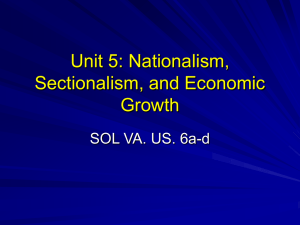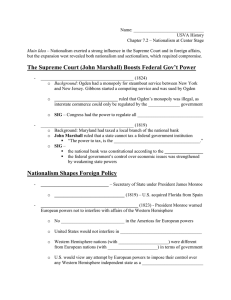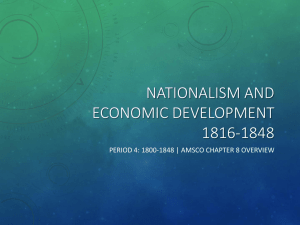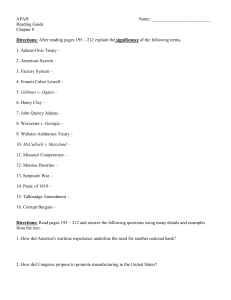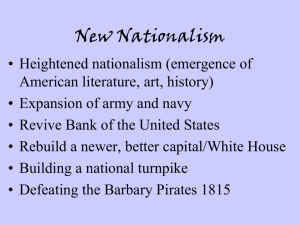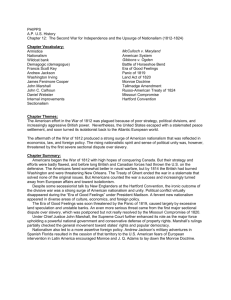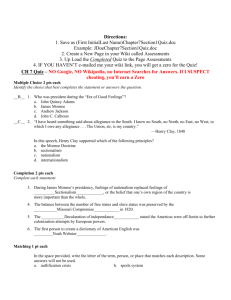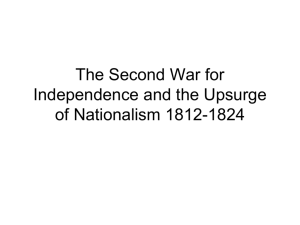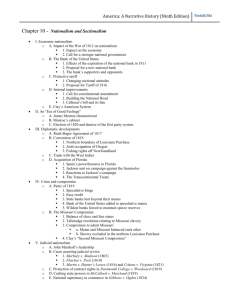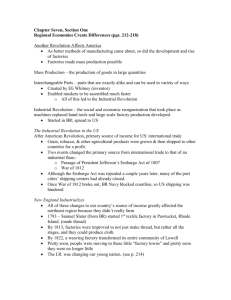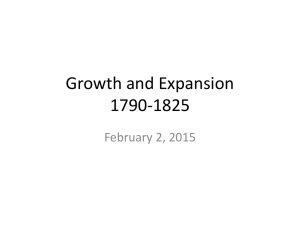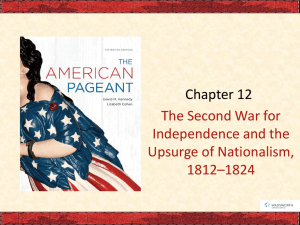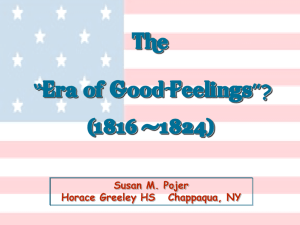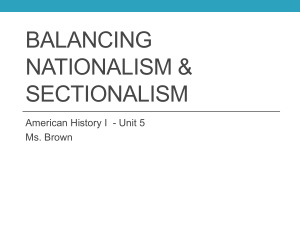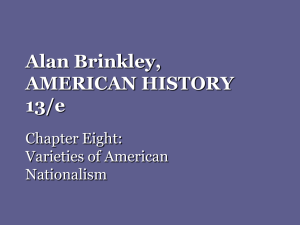Nationalism and Economic Development
advertisement
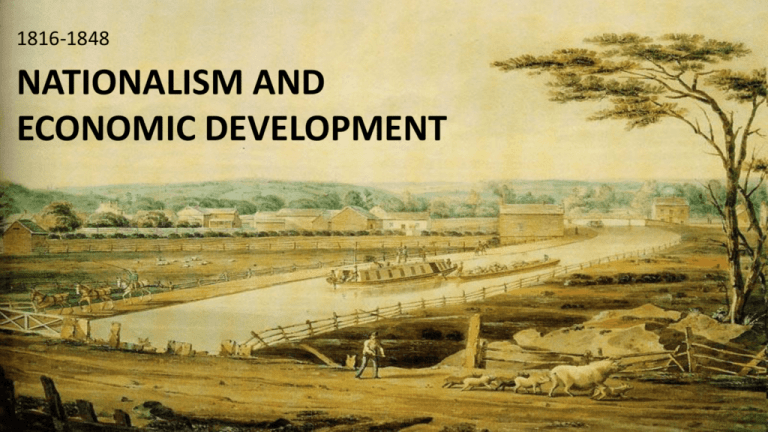
1816-1848 NATIONALISM AND ECONOMIC DEVELOPMENT Essential Question • Both nationalism and sectionalism increased during the Era of Good Feelings. How did both of these beliefs develop concurrently, and did one become of greater importance in the economics and politics of the period? The Era of Good Feelings • Election of 1816 – End of Federalists – Monroe only loses 1 electoral vote in 1820 (John Q. Adams) • James Monroe • Themes: – Nationalism – One party? – Manifest Destiny • Western & Economic Expansion • Cultural Nationalism – Nationalism & Patriotism emerge in art, literature, and education • Economic – Clay’s American System – Tariff of 1816 – Panic of 1819 • Political – New Leadership in Congress • Webster (MA), Calhoun (SC) – Split in the Democratic-Republican Party • Judicial – – – – – Fletcher v. Peck (1810) Dartmouth v. Woodward (1819) McCulloch v. Maryland (1819) Cohens v. Virginia (1821) Gibbons v. Ogden (1821) 1. Build Infrastructure: roads & canals 2. Protective Tariffs 3. National Bank: 2nd BUS Early Western Expansion • Causes – Acquisition of Indian Land • Harrison & Jackson – Economic Pressures • Need for land – cash crops – Tobacco & cotton • Improved Transportation – Canals, roads, steamboats, RR’s • Immigration – Irish & German • Issues w/Western Expansion – “Cheap money” – Cheap Land – Improved Transportation Missouri Compromise (1820) • North-South Balance – Representation – Slavery • Tallmadge Amendment – Prohibit further slavery in Missouri – Require gradual emancipation • Clay’s Proposals – Admit Missouri as slave-holding – Admit Maine as free – Prohibit slavery above 36º30’ • Results: – Nationalism vs. Sectionalism – Jefferson: • "like a fire bell in the night, awakened and filled me with terror. I considered it at once as the knell of the Union." • Foreign Affairs Canada – Rush-Bagot Agreement (1817) – Treaty of 1818 • Florida – First Seminole War (1817-1818) – Florida Purchase Treaty (1819) • Monroe Doctrine (1823) – Response to: Russian presence in Alaska, Spanish involvement in Latin America, ties w/British trade – Impact: • • • Declared US position in world affairs (although unenforceable) Sea change in US foreign policy Justification for Polk and T. Roosevelt Economic Nationalism • Population Growth – Doubling every 25 years • Transportation – Roads • National (Cumberland) – Canals • Erie Canal – Steamboats • Fulton’s Clermont (1807) – Railroads • Largely private lines Economic Nationalism (con.) • Industrial Growth – Mechanical inventions • • Interchangeable parts & the cotton gin (Whitney) Water powered spinning machines – Factory and Mill System • Samuel Slater – • Labor – – – • NE Emerges as industrial center Immigrants Women & children » Lowell System Weak early unions Commercial Agriculture – Cheap land & credit – Improved transportation – Birth of “king cotton” Effects of the Market Revolution • Social – Increased standard of living – Immigrants & Nativism – Women • • Cult of domesticity vs. women in the workplace Decreasing family size – Mobility • Increasing wealth gap – Slavery • Economic – Cottage Market System – Rise of Capitalism • • Continued Western Expansion Political – Renewed Sectional Struggles – Reemergence of States’ Rights
